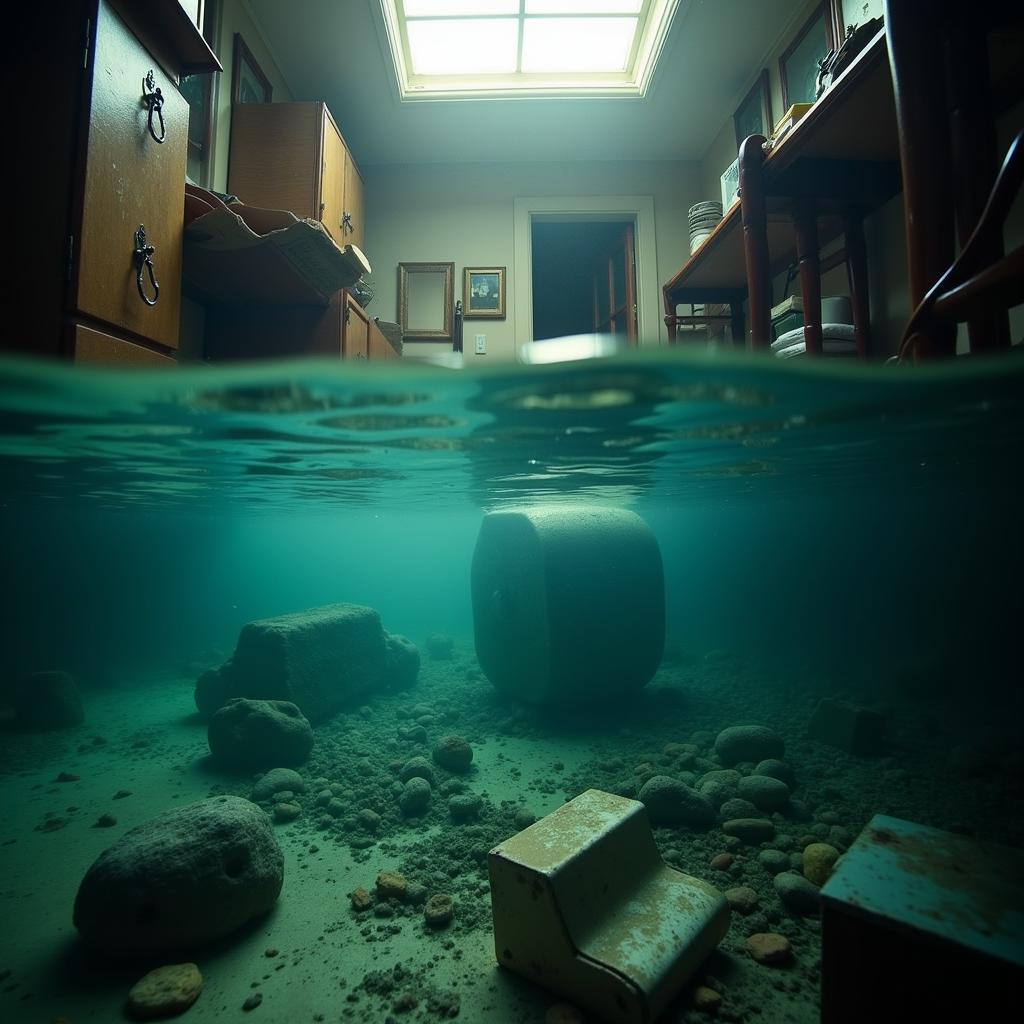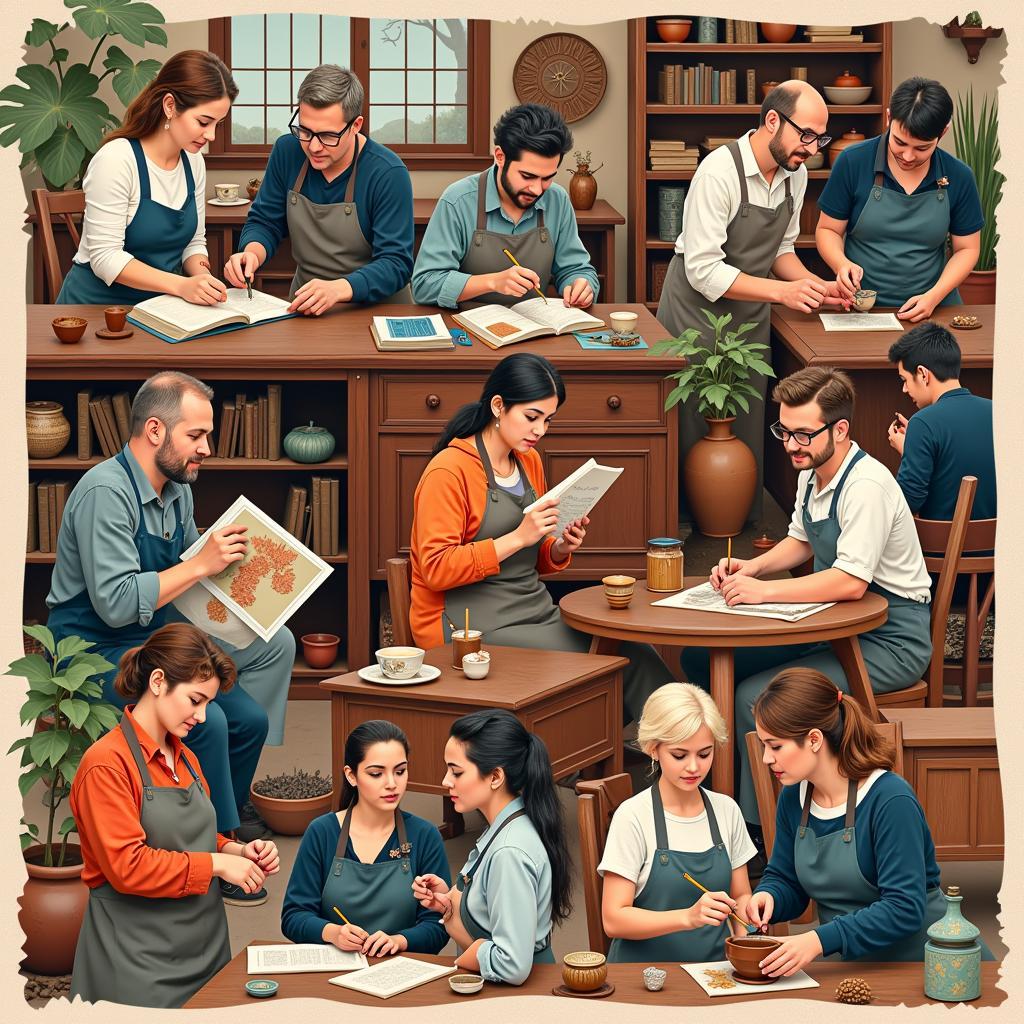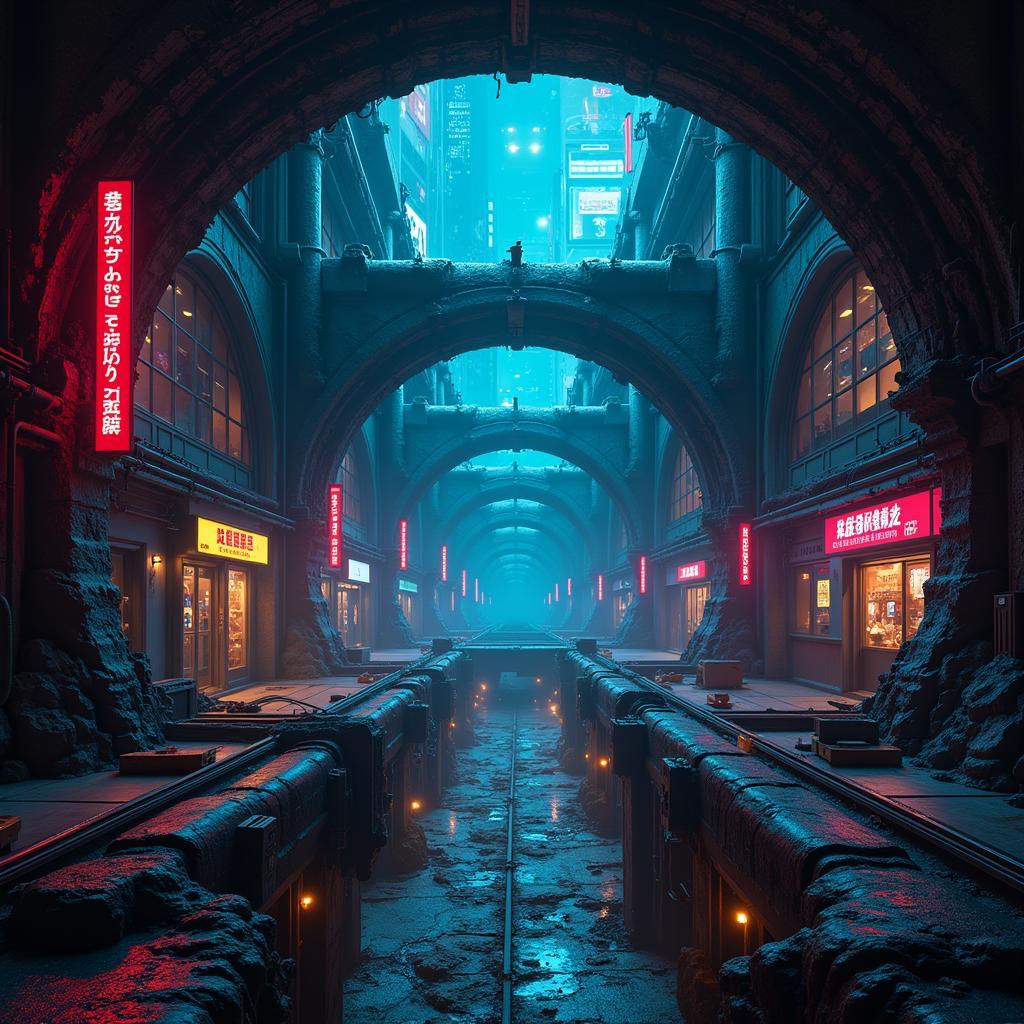Flood Art: When Creativity Meets Chaos
Flood Art is a fascinating genre where artists explore the destructive power and transformative nature of water. Using various mediums and techniques, they capture the raw energy of floods, the aftermath of devastation, and the resilience of life in the face of overwhelming forces.
Delving into the Depths: Understanding Flood Art
Flood art can be representational, depicting actual flood events or their consequences, or abstract, using the symbolism of water to explore themes of change, loss, and renewal. Artists may use photography, painting, sculpture, or even digital media to express their unique perspectives on this powerful natural phenomenon.
One of the compelling aspects of flood art is its ability to evoke a wide range of emotions. It can be a poignant reminder of the destructive force of nature, prompting viewers to reflect on the fragility of human existence. art flood can also be a testament to the indomitable spirit of survival, showcasing the resilience of communities and ecosystems in the face of adversity.
The Allure of Destruction: Why Create Flood Art?
Artists are drawn to flood art for various reasons. Some are driven by a desire to document and raise awareness about the impact of floods on communities and the environment. Others are captivated by the visual spectacle of surging water and the dramatic transformations it brings about. Still, others find solace and inspiration in the themes of renewal and rebirth often associated with floods.
Flood art can also be a form of catharsis, allowing artists to process their own experiences with floods or other traumatic events. By channeling their emotions into their art, they can find meaning and healing in the face of chaos and loss.
Navigating the Currents: Techniques and Materials in Flood Art
The techniques and materials used in flood art are as diverse as the artists themselves. Some artists opt for traditional mediums like oil on canvas or charcoal drawings to capture the raw power of floodwaters. Others embrace mixed media, incorporating found objects, natural materials, or even digital elements to create multi-layered and thought-provoking pieces.
Photography plays a significant role in flood art, documenting the immediate aftermath of floods and the long-term impact on landscapes and communities. Photojournalists and documentary photographers often use their work to shed light on the human cost of floods and the challenges faced by those affected.
 Underwater Photography Flood
Underwater Photography Flood
Beyond the Surface: Interpreting Flood Art
Interpreting flood art is a subjective experience, influenced by the viewer’s personal history, cultural background, and understanding of the world. However, some common themes and interpretations emerge when exploring this genre:
- The Duality of Destruction and Creation: Flood art often explores the paradoxical nature of floods, highlighting both their destructive capabilities and their role in shaping landscapes and ecosystems. Floods can be seen as agents of both chaos and renewal, simultaneously erasing and creating.
- The Fragility of Human Existence: Flood art can serve as a stark reminder of the vulnerability of human life and the impermanence of our creations in the face of natural disasters. It prompts viewers to contemplate our place in the grand scheme of the natural world.
- The Power of Resilience: Despite the devastation they cause, floods also reveal the incredible resilience of life. Flood art often celebrates the strength and determination of individuals, communities, and ecosystems to adapt, rebuild, and thrive in the aftermath of disaster.
Flood Art: A Wave of the Future
As climate change continues to impact our planet, floods are becoming increasingly frequent and severe. It is likely that flood art will continue to evolve and gain relevance, serving as a powerful medium for artists to engage with this pressing global issue.
Whether through realistic depictions of flood-ravaged landscapes or abstract explorations of water’s transformative power, artists will undoubtedly continue to use flood art to raise awareness, provoke dialogue, and inspire action in the face of a changing world.
FAQs: Delving Deeper into Flood Art
1. What is the historical significance of floods in art?
Floods have been a recurring theme in art throughout history, appearing in ancient mythology, religious texts, and classical paintings. From the biblical story of Noah’s Ark to Leonardo da Vinci’s depictions of raging torrents, floods have captivated artists for centuries, symbolizing both divine wrath and the regenerative power of nature.
2. How can I support artists who create flood art?
You can support flood artists by attending their exhibitions, purchasing their artwork, or sharing their work online. Many artists also rely on donations and grants to fund their creative endeavors, so consider contributing to organizations that support the arts or directly to artists themselves.
3. Are there any famous artists known for their flood art?
While there isn’t a definitive list of “flood artists,” numerous contemporary artists explore flood-related themes in their work. These artists often work in various mediums, including photography, sculpture, installation art, and digital media.
4. What are some other art forms that deal with environmental themes?
Environmental art, eco-art, and land art are just a few genres that address ecological concerns. These art forms often utilize natural materials, engage with specific landscapes, or raise awareness about environmental issues such as climate change, pollution, and deforestation.
5. Where can I find more information about flood art and related topics?
Online art platforms, museum websites, and art journals are great resources for exploring flood art and other forms of environmental art. You can also find information about flood art exhibitions, artist interviews, and critical analyses through online art publications and blogs.
If you need help with anything else, please contact us via Phone: 02462573573, Email: [email protected] or visit us at: Savico Megamall, 7-9 Đ. Nguyễn Văn Linh, Gia Thụy, Long Biên, Hà Nội 10000, Việt Nam. We have a 24/7 customer support team.



